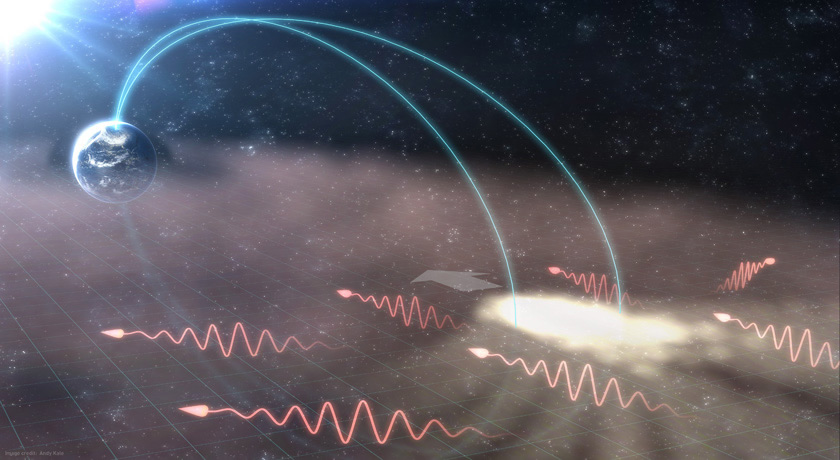Putting the brakes on bursty bulk flows of plasma in the magnetosphere
Suzette Chan - 21 November 2014

Hava Turkakin finds that the Kelvin-Helmholtz Instability excites waves that propogate away from, and cause the braking of, bursty bulk flows in the Earth’s magnetotail. (Image: Andy Kale, University of Alberta)
(Edmonton) The Earth is protected from high energy particles of solar wind by a massive sheath called the magnetosphere. It acts as a shield on the sun-facing side of the Earth, and tails off into a magnetotail on the shadow side. Within the magnetotail, a central plasma sheet seems to send fast plasma flows called bursty bulk flows (BBFs) toward Earth, although they stop far short of our planet. Along the boundaries of these flows, waves propagating in Earth’s direction are often observed.
No one knows how bursty bulk flows are generated, but University of Alberta physics grad student Hava Turkakin has identified how waves along the BBFs are generated and how the BBFs come to a stop.
“We have shown that the Kelvin Helmholtz Instability occurring along these bursty bulk flow channels can be the reason for the generation of these waves,” says Turkakin, whose recent paper on the topic was published in Geophysical Research Letters and was featured in the American Geophysical Union spotlight as a paper with innovative ideas.
Turkakin believes KHI waves are generated when there is a shear flow (different flow velocities in two different regions of two different fluids) between plasmas in the magnetotail. “These waves first accumulate the energy available in the flow in them, grow to large amplitudes and then finally attain large enough propagation speed perpendicular to the fluids boundary (i.e., the bursty bulk flows) and move away,” she says. “As the KHI waves move away, they also carry the energy out of the bursty bulk flows.”
This interaction cases BBFs to stop about 6 Earth radii (approximately 38,220 km) from Earth. Even without the KHI-related brake, bursty bulk flows could not get too close to Earth. “Earth's magnetic field prevents solar radiation from entering the atmosphere,” Turkakin says. “If the Earth had no magnetic field, no life would likely be possible because the radiation from the solar wind and solar eruptions would reach the surface.”
Still, bursty bulk flows can influence other activity in the Earth’s magnetosphere, phenomena that Turkakin would like to explore further.
“I would definitely study if these waves may cause particle energization along the geomagnetic field lines and thus substorm intensification,” she says. “This would also cause auroral brightening, which we perceive as brighter aurora covering larger area of sky. This is observed to occur after a BBF generation and stopping in the central plasma sheet.”
Turkakian identified some less remote effects. “Intensification of substorms can interrupt radio signals and damage satellites and electrical systems that bring power to our homes.”